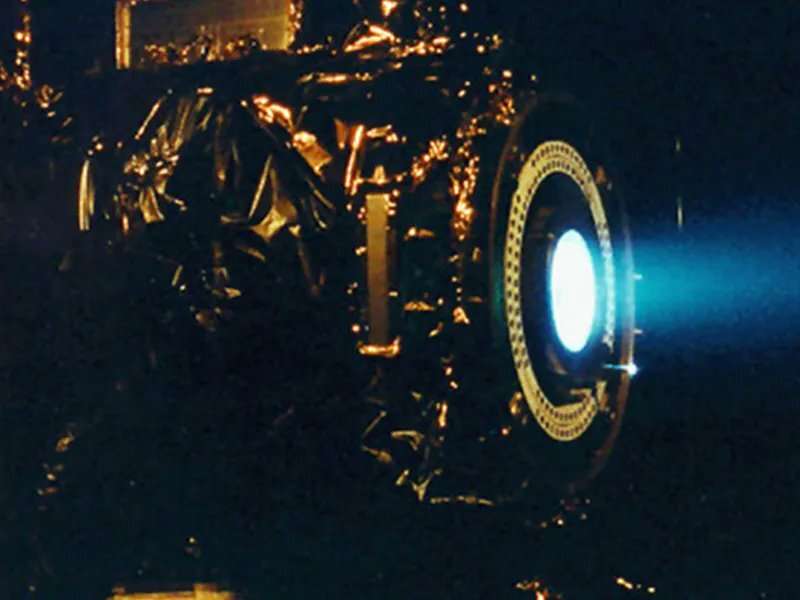Typically, large satellites have a reserve of fuel left over specifically to offset that drag, whereas additional launches constantly refuel systems like the ISS.
A fiery death in the atmosphere awaits those without the benefit of a lifetime's supply of fuel or constant refueling missions. Many systems would suffer such a fate, as the cost of simply shipping enough fuel to that orbit outweighs some of the benefits of the data they would return. So what if a satellite operator could keep their orbit stable without any additional fuel?
Enter the Atmospheric-Breathing Electric Propulsion (ABEP) system. It takes in atmospheric particles, which are still relatively abundant even at 450 km up, and uses them to fuel an electrical ion drive. Similar propulsion systems have previously been tested in space without gravity, but none have so far been operational inside an atmosphere. That may change soon.
Several groups in the U.S., EU, and Japan are researching potential ABEP systems, though the ESA contingent seems the farthest along. Taking funding from ESA's Horizon 2020 program, their project, known as DISCOVERER, and based at the University of Stuttgart, researched two main components of any ABEP. In the DISCOVERER system design, an atmospheric intake would feed atmospheric particles to an ion engine, while a plasma thrust would ionize those particles and eject them out the back of the craft.
Essentially that would allow any satellite equipped with such a system to have an unlimited fuel source and even be able to refuel other craft in the area. But the technology is a long way off from offering some benefits, so the ESA team released a sort of plan of attack for the technology of ABEP propulsion systems that looks at several potential use cases and assesses whether current technology would be up to snuff to fulfill the needs of the application.
The first of those applications would be to maintain a stable orbit around the Earth at a height of less than 450 km. Relatively simple in concept but still challenging to achieve in practice. According to the paper, orbits between 180 and 250 km are the sweet spot for the type of ABEP engines currently undergoing testing. Any higher, and there wouldn't be enough atmospheric particles to act as fuel. Any lower, and the atmospheric drag would be more than the thruster could counteract.
Extrapolating to other use case scenarios, the researchers looked at what an orbital maintenance mission around Mars would look like. While not quite as feasible as an Earth orbit, given Mars' significantly less dense atmosphere, an ABEP mission would likely be able to maintain a Martian orbit of between 130-160 km without the need for external fuel.
Taking it even a step further, ABEP-powered satellites could even provide additional fuel to other craft that launch without their own mechanism of collecting atmosphere to use as fuel. With current technological levels, this looks less feasible around Earth, with only microsatellites requiring the amount of fuel an ABEP refueling craft would provide.
On Mars, on the other hand, the lower atmospheric drag makes such missions more feasible. However, there isn't exactly a high demand for Martian orbit refueling at this point in space infrastructure development.
Even if there were, there are other potential hazards for ABEPs. In Earth's orbit, the components of any craft would be subjected to elemental oxygen, which has a highly corrosive effect on parts. So much so that a craft's oxidation resistance might be the factor that determines how long it will last. That is a different engineering challenge altogether.
For now, all ABEPs are still in the prototyping stage, and it will be a while before any mission flies. There's still plenty of modeling work to be done, though, including looking at what the feasibility of orbital maintenance or refueling missions would look like on other atmosphere-shrouded worlds such as Titan. This elegant solution is still early on in its development cycle, but it could potentially help solve a very thorny problem.
More information: Vaidya et al, Development and analysis of novel mission scenarios based on Atmosphere-Breathing Electric Propulsion (ABEP), arXiv (2022). DOI: 10.48550/arxiv.2211.09493
Journal information:arXiv
Provided by Universe Today



